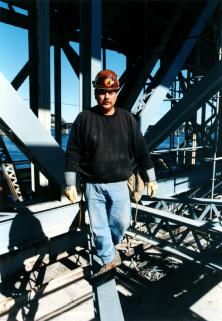

|
|||||
|
|
|
|
|
|
|
| Directed by Alanis Obomsawin |
| Canada, 1997 (documentary, 58 minutes, colour, English) |
| Also known as "Spudwrench : l'homme de Kahnawake" |

|
| Image: © National Film Board of Canada |
| Video (National Film Board of Canada) |
|
Film Description: "Meet Randy Horne, high steel worker from the Mohawk community of Kahnawake, near Montreal. As a defender of his people's culture and traditions, he was known as 'Spudwrench' during the 1990 Oka crisis. Horne was behind the barricades, resisting the efforts of the municipality of Oka to expand a golf course onto sacred Mohawk land. Horne is one of many Mohawk high steel workers who have travelled the continent, working on some of the world's tallest buildings—but have never lost touch with their roots. Spudwrench - Kahnawake Man is both a portrait of Horne and the generations of daring Mohawk construction workers that have preceded him, and a unique look behind the barricades at one man's impassioned defence of sacred territory." -- National Film Board of Canada (source) |
| Film Credits (partial): | |
| Written by: | Alanis Obomsawin |
| Produced by: | Alanis Obomsawin, Don Haig |
| Film Editing: | Donna Read |
| Music: | Claude Vendette, Francis Grandmont |
| Production Company: | National Film Board of Canada / Office national du film du Canada |
"Certainly, Spudwrench comes across as peaceful and hardworking, which suits the film's emphasis on the importance of Native labor to the wider economy of North America. In depicting scenes such as Spudwrench's long commute from Canada to New York City to toil on half-constructed skyscrapers, Obomsawin creates an insightful portrait of Native men as a neglected part of the working-class culture of North America."
-- Randolph Lewis
(source)
|
|
|
|
|
|
|